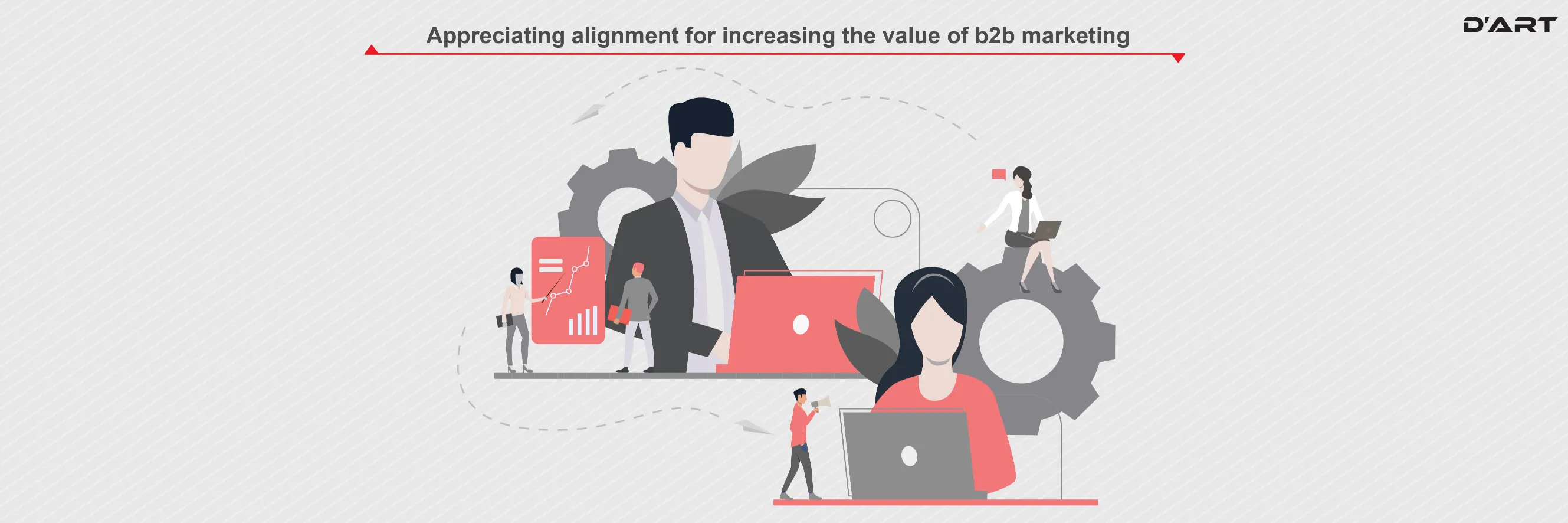APPRECIATING ALIGNMENT FOR INCREASING THE VALUE OF B2B MARKETING

It’s competitive when it comes to valuing B2B and B2C marketing, specifically for different businesses. For it, branding and performance are always proportional in either way. With a countable buying group, B2B organizations engage in more long and complex sales cycles (for considered purchases). This engagement felicitates in developing an environment for B2B marketing teams.
There’s a lot when it comes to driving value for organizations, and B2B marketers are in the continuous run to fetch by bringing prospects to the table. What else can they do for ‘more’?
It’s not about generating more, more, and more leads but instead of generating the quality ones.
Value of Quality Leads
Through a 2021 survey, it was substantial that the prime objective of digital marketing leaders was to generate quality leads. Quality has collective effects throughout the revenue (life)cycles. The tussle between quality and quantity is prevailing in many B2B organizations.
The traditional funnel metrics are turned upside down when an organization improves lead quality. As quality increases, the raw number of leads decreases. However, conversion rates could increase throughout the whole process. Buyers who fit into these categories are more likely to be interested in the solutions. Consequently, more deals are closed. It certainly shows the value of B2B marketing to the sales team.
Value of Alignment
Based on market understanding, persona development, and quantitative data, marketing teams possess a broad range of knowledge. It would be a combination of both third-party and first-party data. In sales, buyers' challenges are more granularly understood, particularly their mission-critical goals.
Creating a common lead qualification definition combines these two unique perspectives to help organizations fine-tune their audience. Both sales and marketing teams talk to the same prospects. From this audience, marketing can generate inbound leads and provide cover for sales to prospects.
This collaboration between marketing and sales can ensure that they are communicating the same message with buyers. A study has shown that 15% of the buyer's buying cycle is spent reconciling information sources. It's usually between vendors, but if the marketing and sales teams of one vendor send out different messages, that just makes it harder to understand what they are saying.
Lastly, there's account-based marketing.
Value of Account-Based Strategy
Digital marketing leaders’ survey results above show that increasing sales among targeted leads is their second priority. This shift in the way marketing and sales collaborate is reflected in 38% of leaders supporting identified leads. The ABM (Account-based Marketing) process does not involve a distinct hand-off between marketing and sales once a lead is qualified. Instead, both functions collaborate throughout the process.
Marketers and sales professionals often bring their perspectives to the development of ideal customer profiles as part of ABM. Using qualitative and quantitative data, this process identifies an organization's most valuable, strategic, and fit customers. With the help of look-alike modeling, marketing and sales create a target account list based on the common attributes of these customers. Campaigns can be created by segmenting these accounts, while sales can start prospecting.
These orchestrated processes are supported by technology and data, as buyers are viewed as members of one account rather than as individuals.
The revenue life cycle for B2B organizations has traditionally been driven by sales. Marketers are gaining a greater understanding of the value of B2B marketing as digital dominance continues in the life of brand marketing strategies.